Mitchell Bellanger strings another carp onto his float line as he hunts along the edge of a canyon in Lake Powell on Saturday, April 30, 2022. Hunters rigged a variety a lines for quick offloading of carp from their spears, sometimes shooting more than a dozen a single session. Evan Frost
Dozens of the best spearfishers from around the country dove into Lake Powell to shoot more than 19,000 thousand pounds of fish in two days during the freshwater nationals tournament last month.
The spearfishing teams battled incredibly low water levels due to drought. The reservoir’s last tournament in 2018 saw water levels nearly 90 feet higher. That wasn’t the case this year, and some teams arrived a week early to scout the lake. Even teams who have hunted the lake previously found themselves in unfamiliar territory.
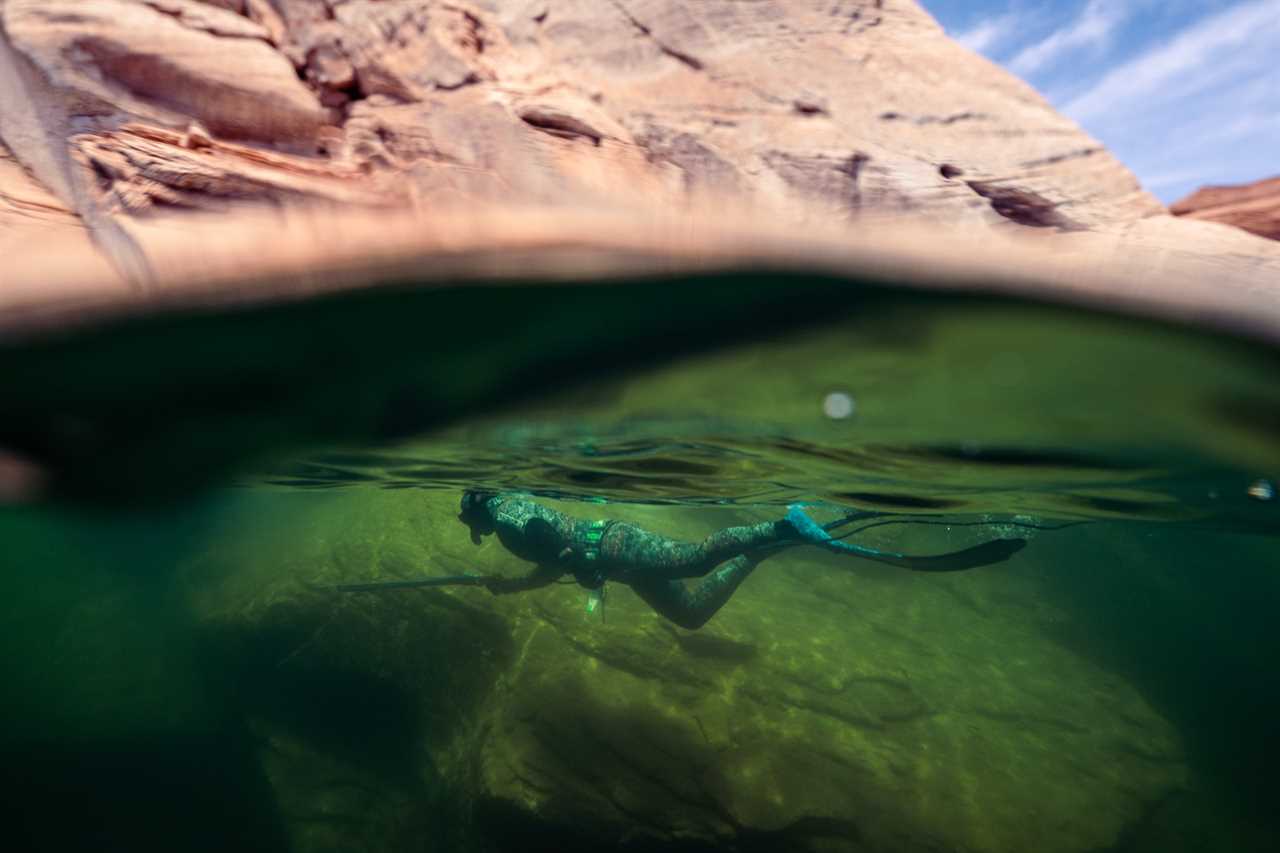
Team Tres Leches member Fernando Gutierrez hunts along a wall during the second day of competition in the 2022 Freshwater Spearfishing National Tournament in Lake Powell on Saturday, April 30, 2022. Guttierez is a member and founder of OC Spearos, a club based in Orange County, California. Evan Frost
“Scouting was a lot harder because you had basically a different lake. You had to scout as if you’ve never been to the lake before. The structure and everything can change because of the water level,” says Mike Livingston, National Freshwater Spearfishing Association president.
In addition to changing the landscape for hunters to navigate, the record low water levels made for a logistically intense tournament. Only two lanes at one working boat ramp were usable to get more than 20 competing boats in and out of the water in tight time frames.
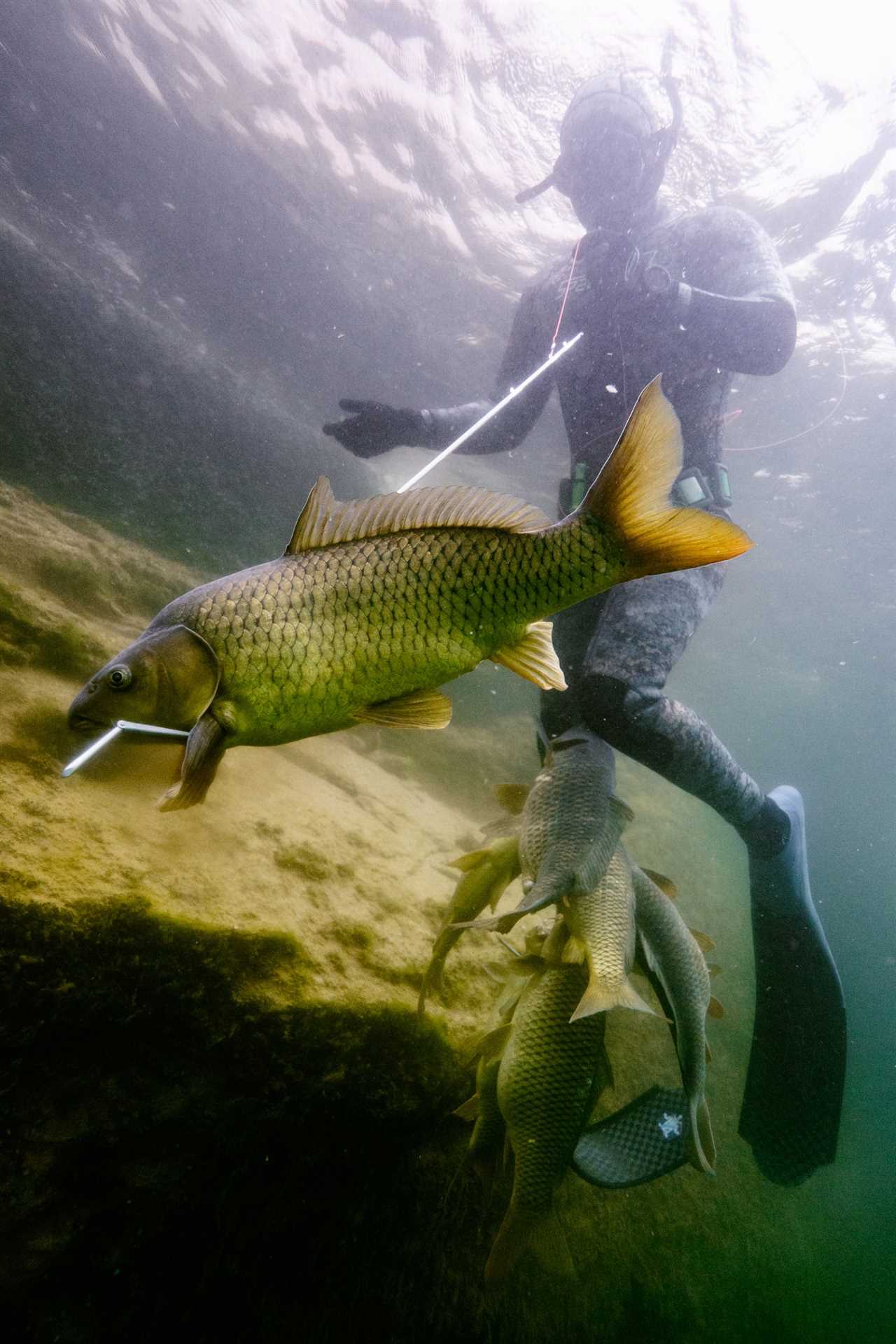
Fernando Gutierrez pulls in a common carp on his spear during the second day of competition Saturday, April 30, 2022. Guttierez shot 68 carp and two striped bass for a total of 74 points, but his team was disqualified for an early start. Evan Frost
Teams accustomed to saltwater had to adapt to an entirely new style of hunting. Day one sent teams after gamefish, mostly striped bass and the occasional walleye. Both are non-native species in the lake. On day two, the spearfishers targeted carp. Points were awarded for the heaviest fish, but it was the quantity of fish that could push teams onto the podium.
Instead of deep dives and long breath holds waiting for big fish in the blue water like they might in saltwater, hunters dove repeatedly toward murky bottoms in narrow canyons, reloading their guns dozens of times an hour.
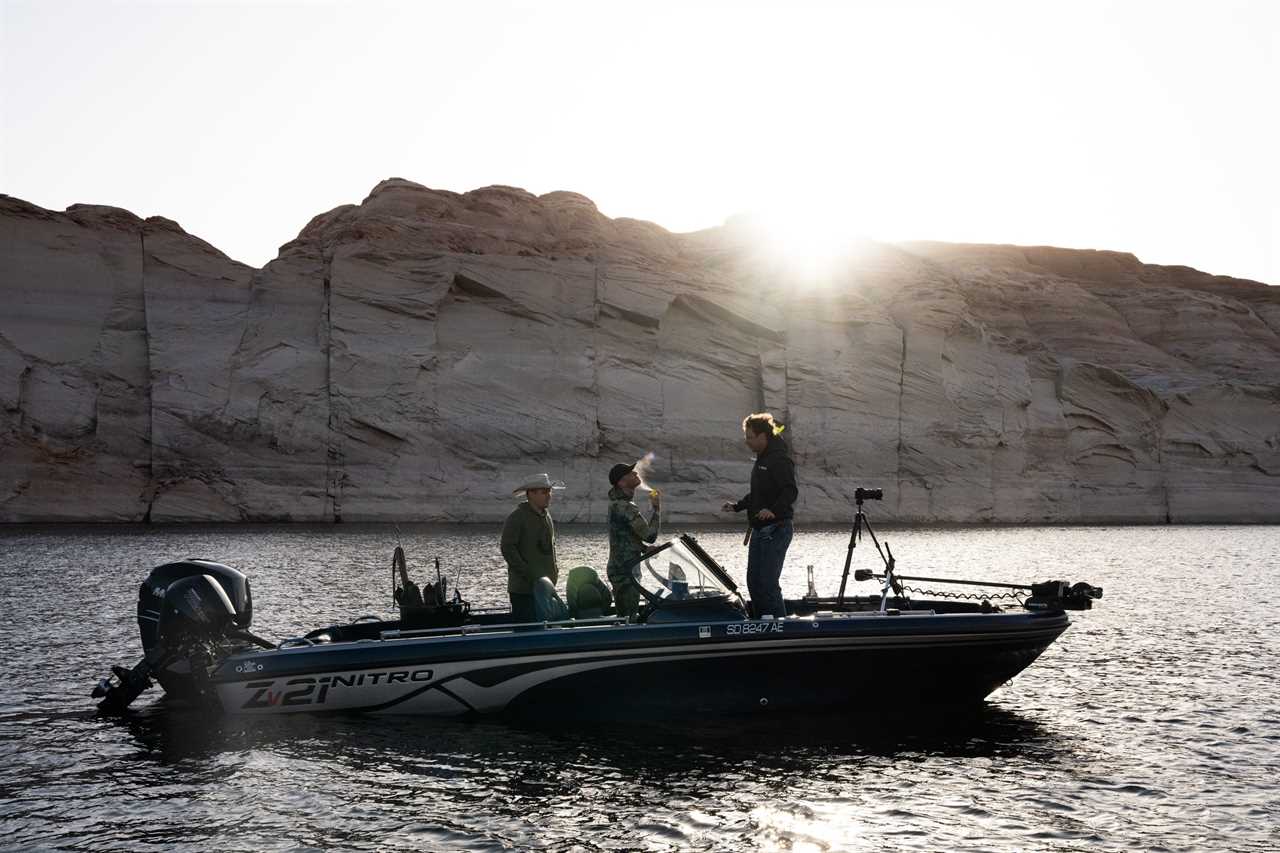
Contestants don wetsuits and apply sunscreen as they wait for a 7 o’clock shotgun start before the first day of the tournament on Friday, April 29, 2022. Evan Frost
“I think I did 204 or 208 drops on the carp day,” says Justin Lee, who finished first place in the men’s division, bagging 82 fish over 2 days. In his native Hawaii, three-minute breath holds and dives of more than 100 feet into crystal clear water is the strategy.
“You just can’t get the numbers that you need if you’re diving like that. So you kind of gotta change your whole system, your way of diving, to just get more time underwater,” Lee says.
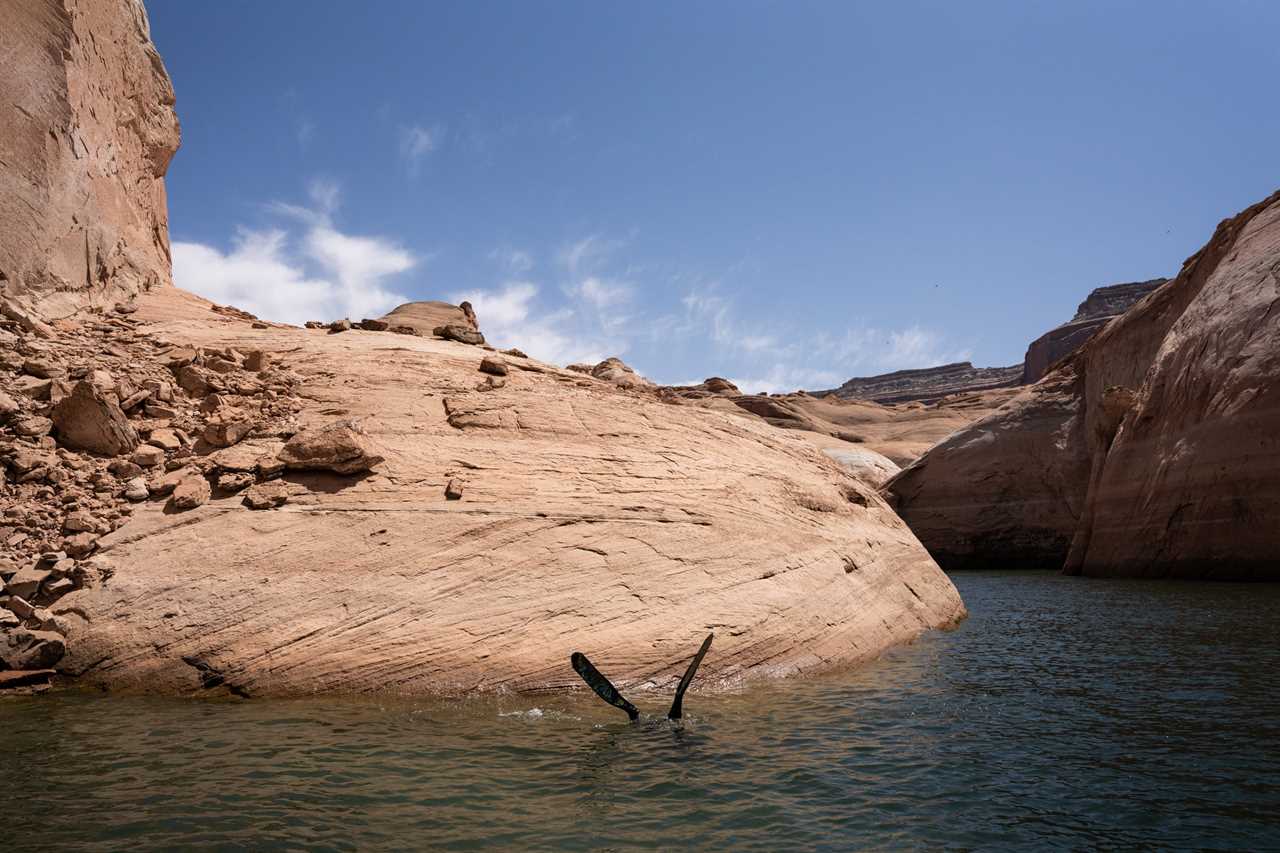
Darvil McBride dives into a canyon while scouting for fish ahead of the tournament on Thursday, April 28, 2022. Evan Frost
By the end of day two, teams were crammed into boats with hundreds of pounds of carp stuffed into trash bags and barrels. Nicole Burko shot 61 carp and three striped bass. She took second overall in the women’s division.
“It’s a nightmare, you’re dealing with fish slime everywhere. It’s all over the boat, it’s all in your face, and all over your wetsuit,” competitor and 2021 champion Darvil McBride says.
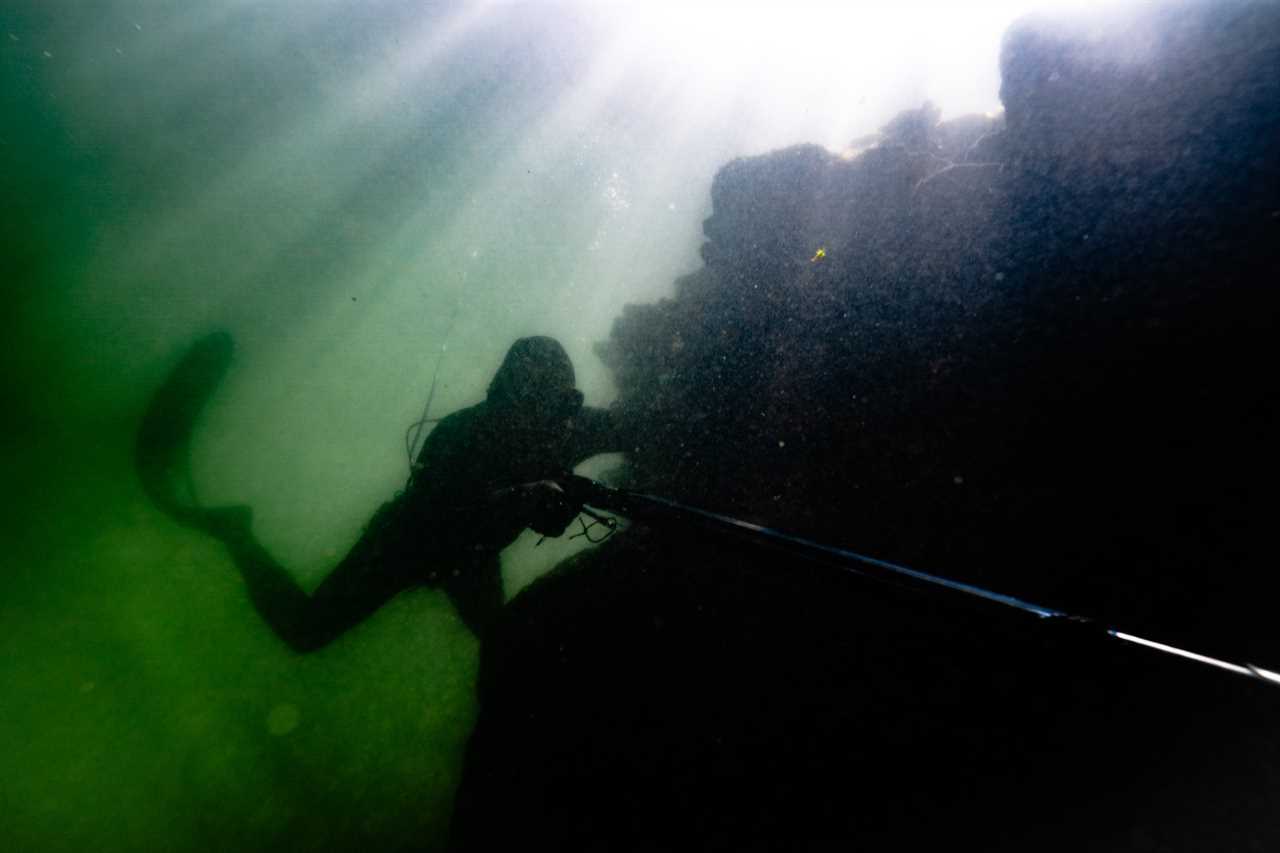
Darvil McBride stops for a photograph from behind a rock cliff under the surface of Lake Powell. Evan Frost
In previous years, the tournament worked with fertilizer producers and reptile farms to donate the massive amounts of carp to useful causes. This year, the National Park Service disposed of the fish from the Wahweap Marina following weigh-in.
Though not officially deemed invasive in Lake Powell by the states of Utah or Arizona, there is a large population of carp that competes for resources with more popular species. In parts of Utah, carp are managed with state removal programs to level the playing field for other fish.
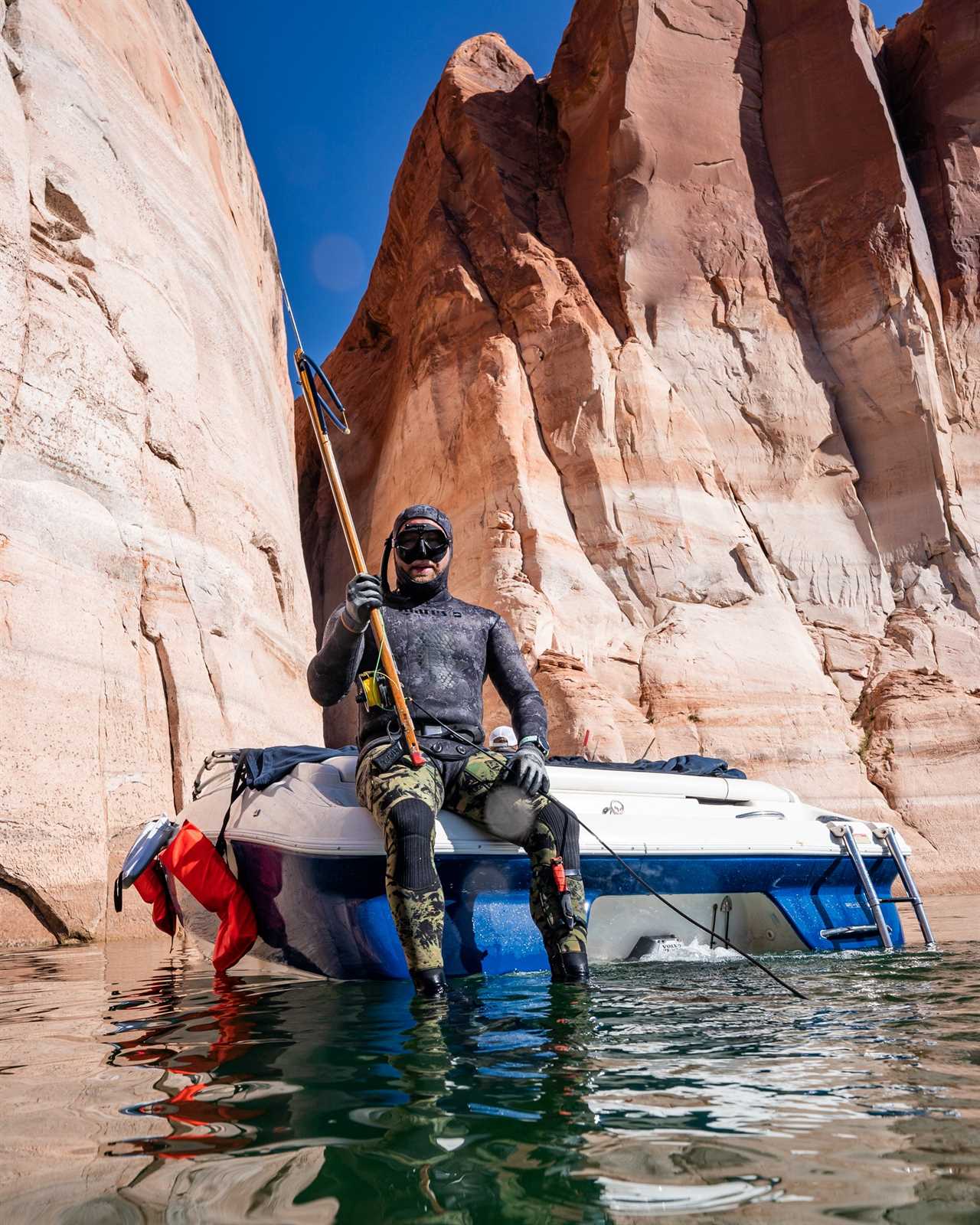
Mitchell Bellanger gears up to get in the water. Signs of previous water levels, known as bathwater rings, can be seen on the canyon walls. Evan Frost
Utah Division of Wildlife Resources biologist Dan Keller started fishing the lake as a teenager and can only recall three times that he has caught a carp on a rod and reel. The efficiency of the spearfishers impressed him, but the impact of the tournament is unclear.
“I would say, Yeah, removing [thousands] of fish from a reservoir as large as Lake Powell probably isn’t making a biological impact,” Keller says. “At the same time, the optimist view is, well, that’s [a few thousand] fish out of there that are competing. Maybe we’re freeing up some resources for some other species.”
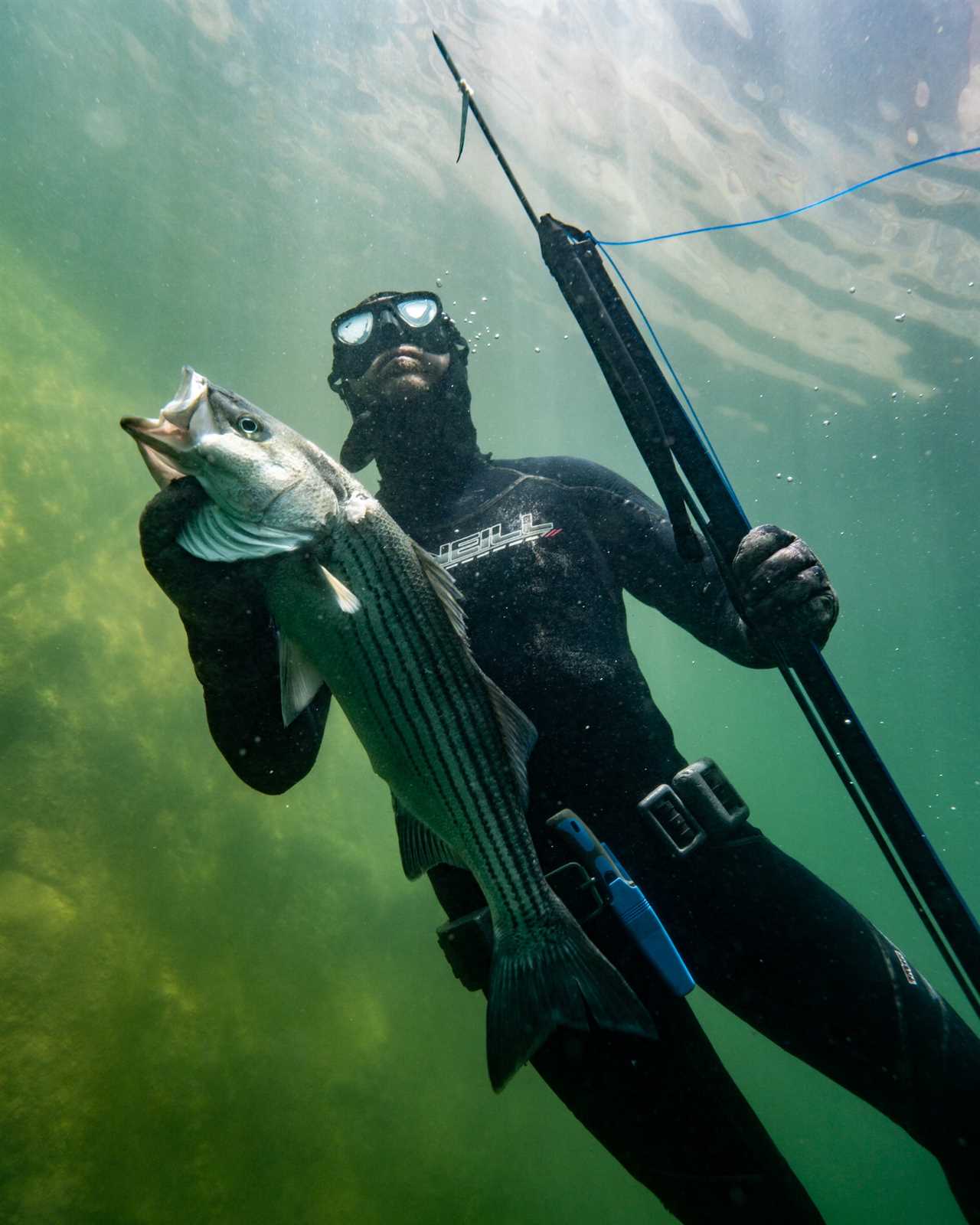
Darvil McBride surfaces with a Utah state-record striped bass after spearing it on the second day of competition Saturday, April 30, 2022. The 6-pound 3-ounce bass nearly tripled the state record for a striped bass shot on a spear. Evan Frost
Eurasian carp (or common carp) have been rampant in waters across the U.S. since they were brought to the country for cultivation in the late 1800s. The rapidly reproducing species of bottom feeders can crowd out other fish populations and muddy waters as they search for food, eating anything they come across.
The creation of the lake by the damming of the Colorado River in 1963 led to the introduction of other numerous non-native game fish. Species of bass and carp make up the biggest share of the lake’s fish population, competing with native suckers, bonytails, and chubs among others.
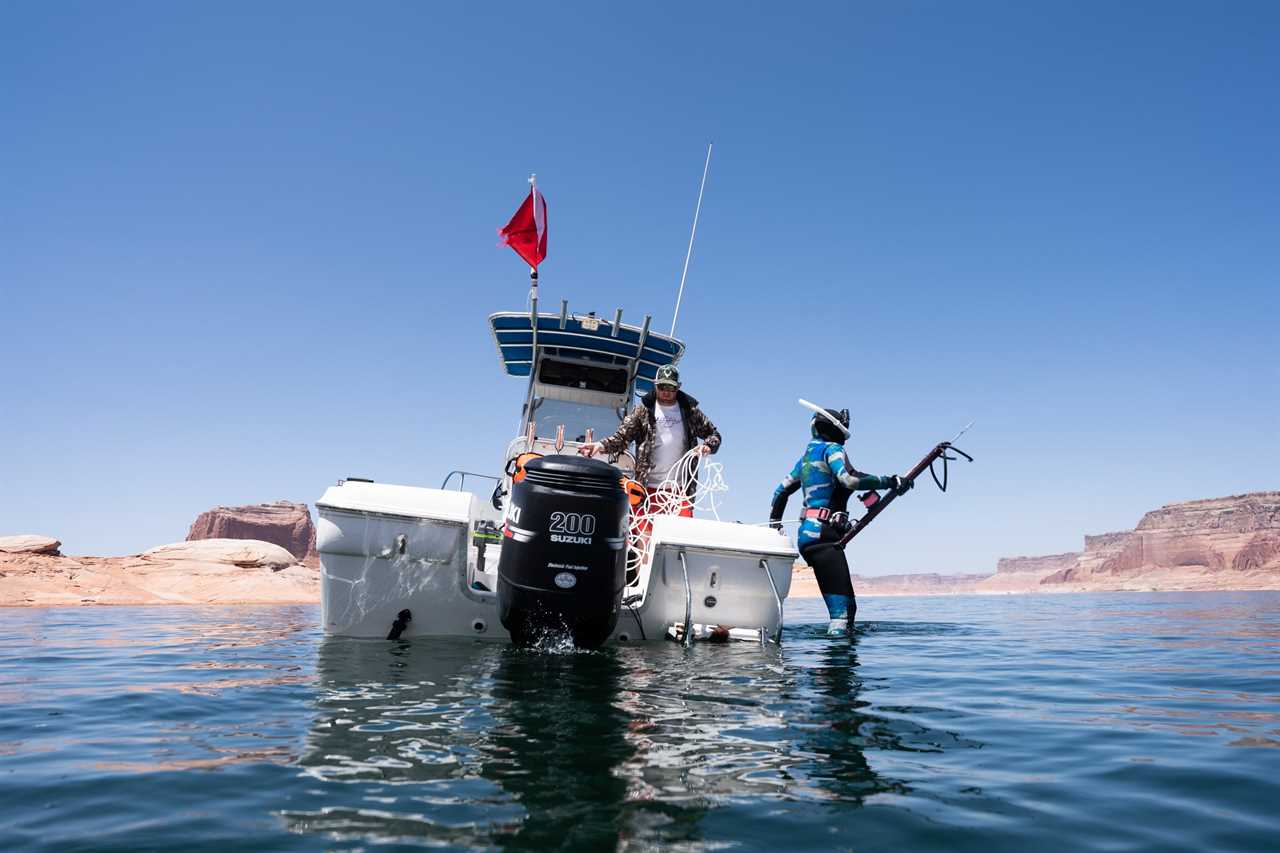
Competitor Heather Kirby enters the water as boat captain Jonathan Durtka tosses in her line and float. Each diver was required to swim with a float and dive flag attached to them with a line. Evan Frost
Beyond the biological impacts, Keller thinks that the biggest positive is the engagement with the environment that the tournament brings, bringing hunters from all over the country to experience and connect Lake Powell’s fisheries.
The experience changes dramatically year-to-year with Lake Powell’s water level, which has dropped 40 feet since 2021. Keller cites the variable water levels as a tool in the fight against invasive zebra and quagga mussels, which consume phytoplankton young fish rely on. Sites where colonies of mussels settle in are disrupted when dams release water, leaving the mussels high and dry.
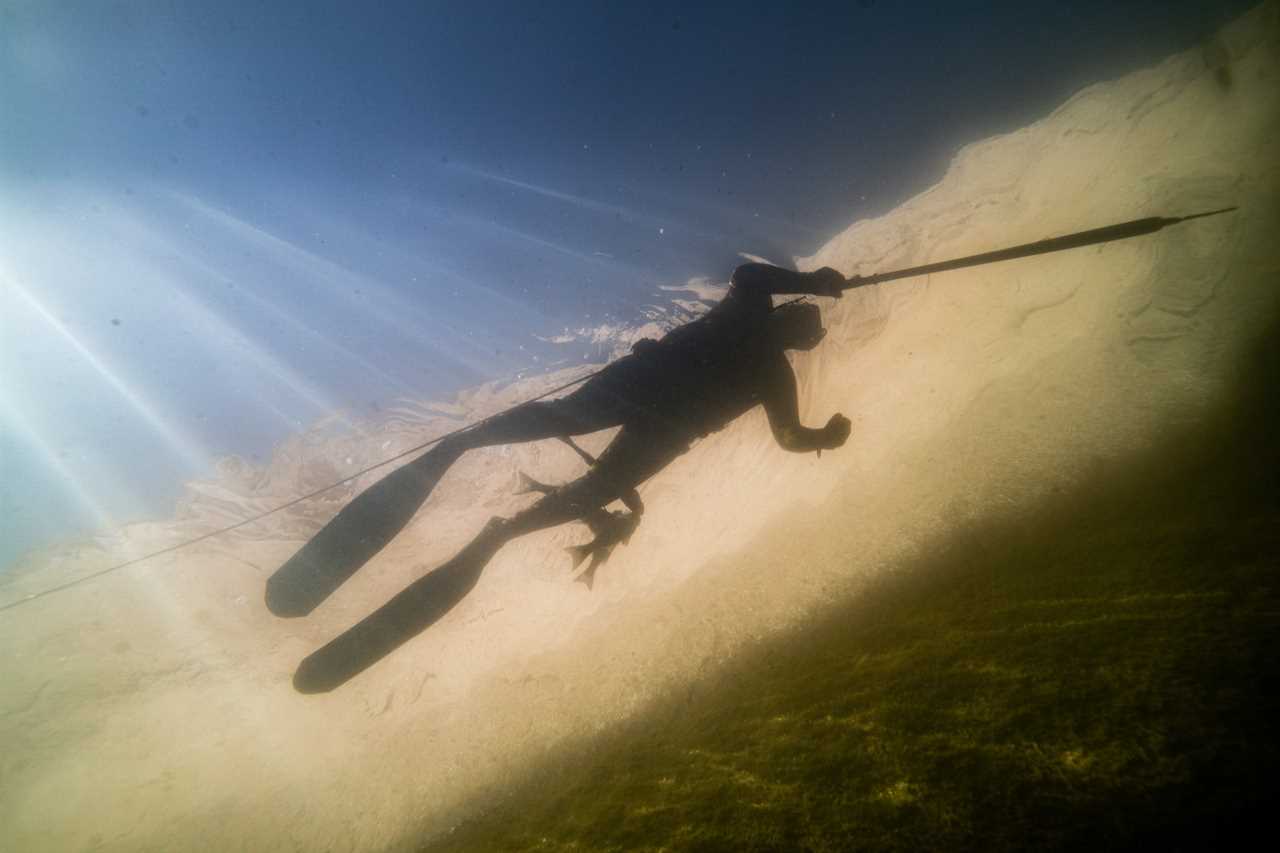
Competitor Jake Lords swims along the surface in a slot canyon as he prepares for another dive. Evan Frost
As the lake approaches critically low water levels in the second decade of the Southwest’s megadrought, the Department of the Interior is taking unprecedented steps to keep a water level capable of generating hydroelectric power. What’s good for power may also be good for invasive mussels according to Keller.
“If [water levels remain consistent] we might have quagga mussels really build up in high densities and we might see some impacts to the fish populations from that.”
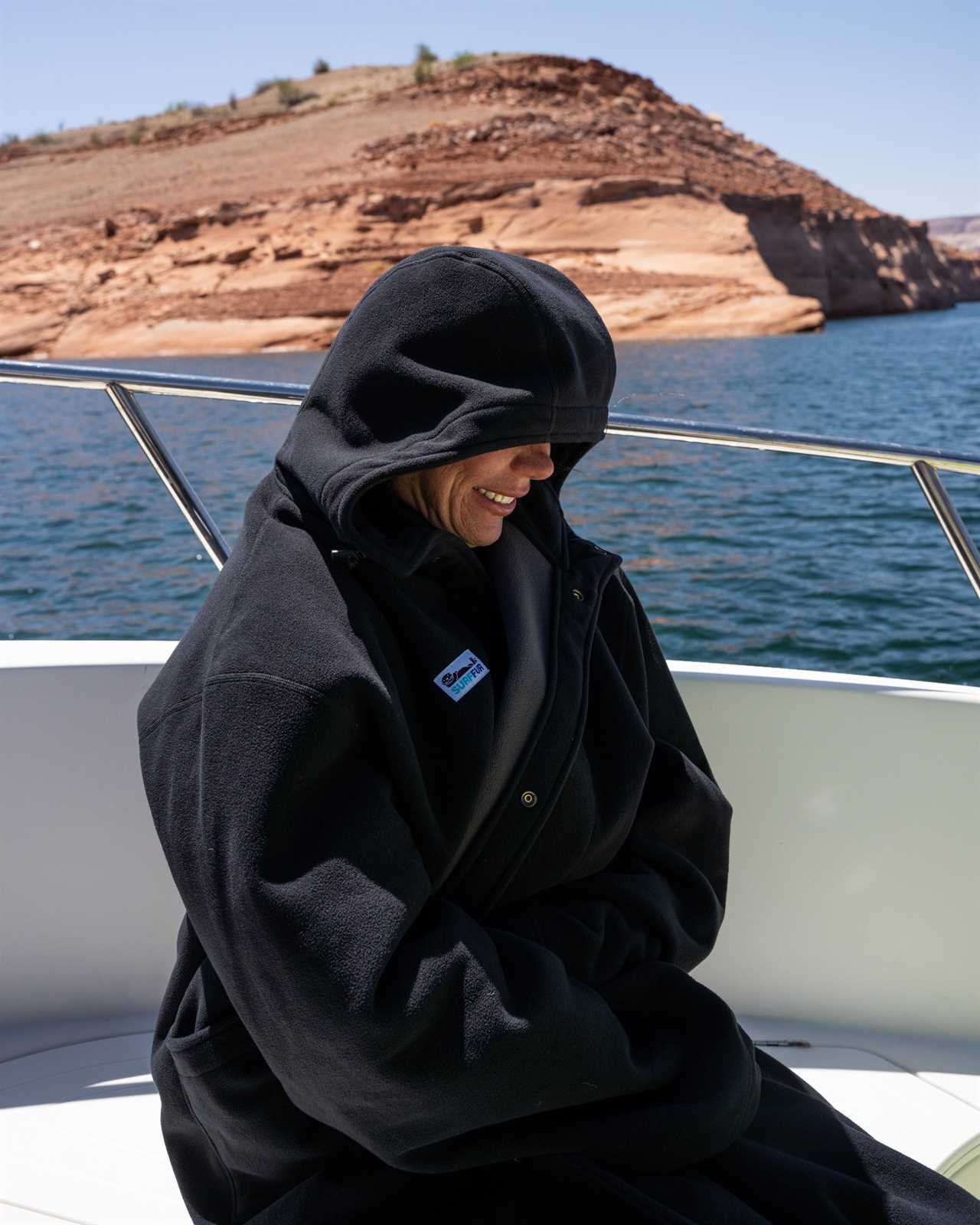
Heather Kirby warms up on the boat after a morning of diving in the 58-degree water. Many competitors came from warm coastal waters, traveling from as far as Florida, California, and Hawaii. Evan Frost
Despite the uncertainty surrounding the state of the reservoir, the National Freshwater Spearfishing Association is on deck to host the world championship in Lake Powell next year, where competitors will fly in from around the globe. Mike Livingston, NFSA president, hopes that a stable, albeit low, water level will lead to a successful tournament next year.

Darvil McBride peers over a cliff’s edge as he searched for carp on the second day of competition. Evan Frost
“We truly will have the very best freshwater divers in the entire world convening in one place at a beautiful location to dive and to show how good they are,” Livingston says.
Lee and McBride both qualified to come back next year. Team USA gets four teams for each division: mens, womens, mixed, and masters. Lee is hoping to bring another trophy home to Hawaii.
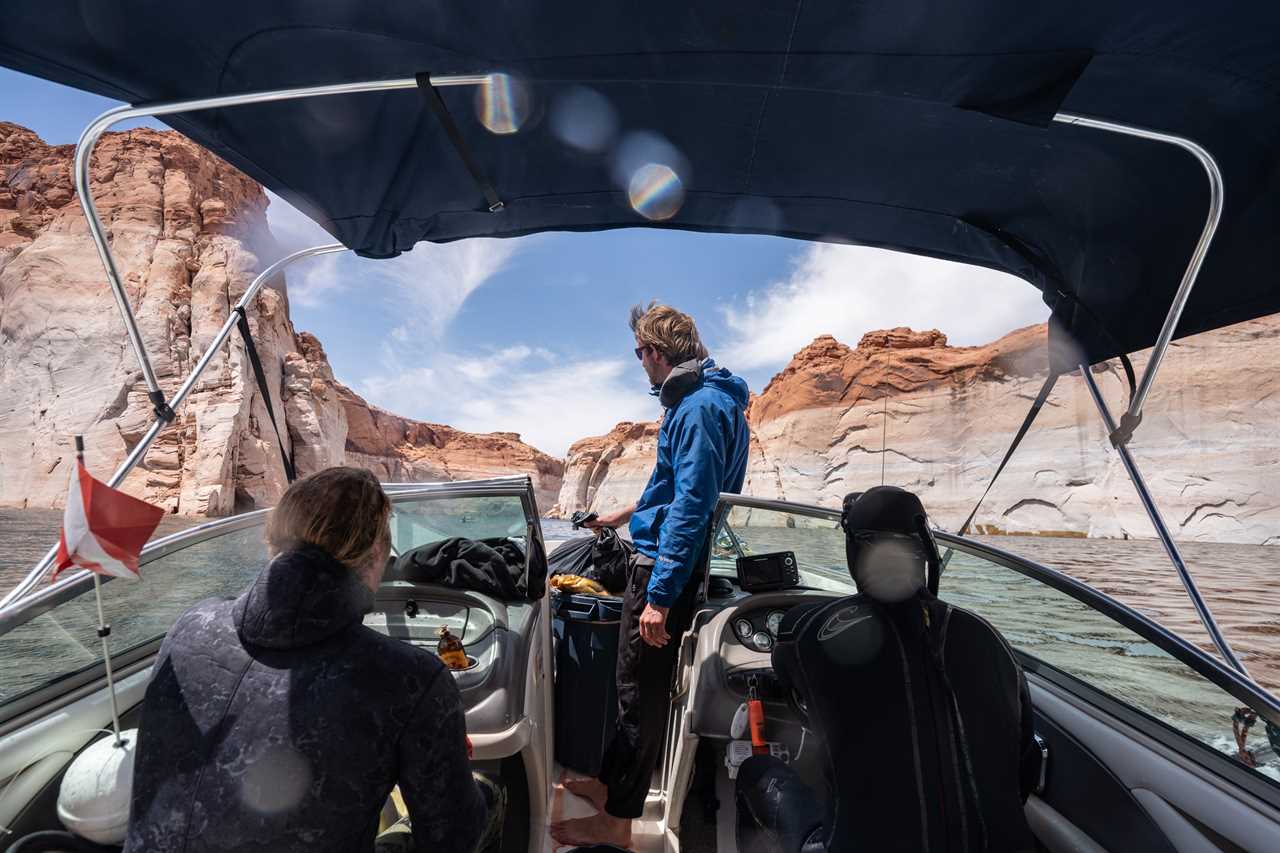
Hunter McBride secures trash cans full of speared carp in the front of the Tres Leches team boat as his brother Darvil (right) drives the team to their next dive spot. Evan Frost
“Spearfishing, and living outside, off the land is just the way of life. To get some notoriety and to win a national championship, for something that you learned to do as a little boy, or little girl in the small town to bring home food is huge,” Lee said.
Until the competition returns to Lake Powell, Lee says he’ll be training in Honoka’a and “living on cloud nine gazillion.”
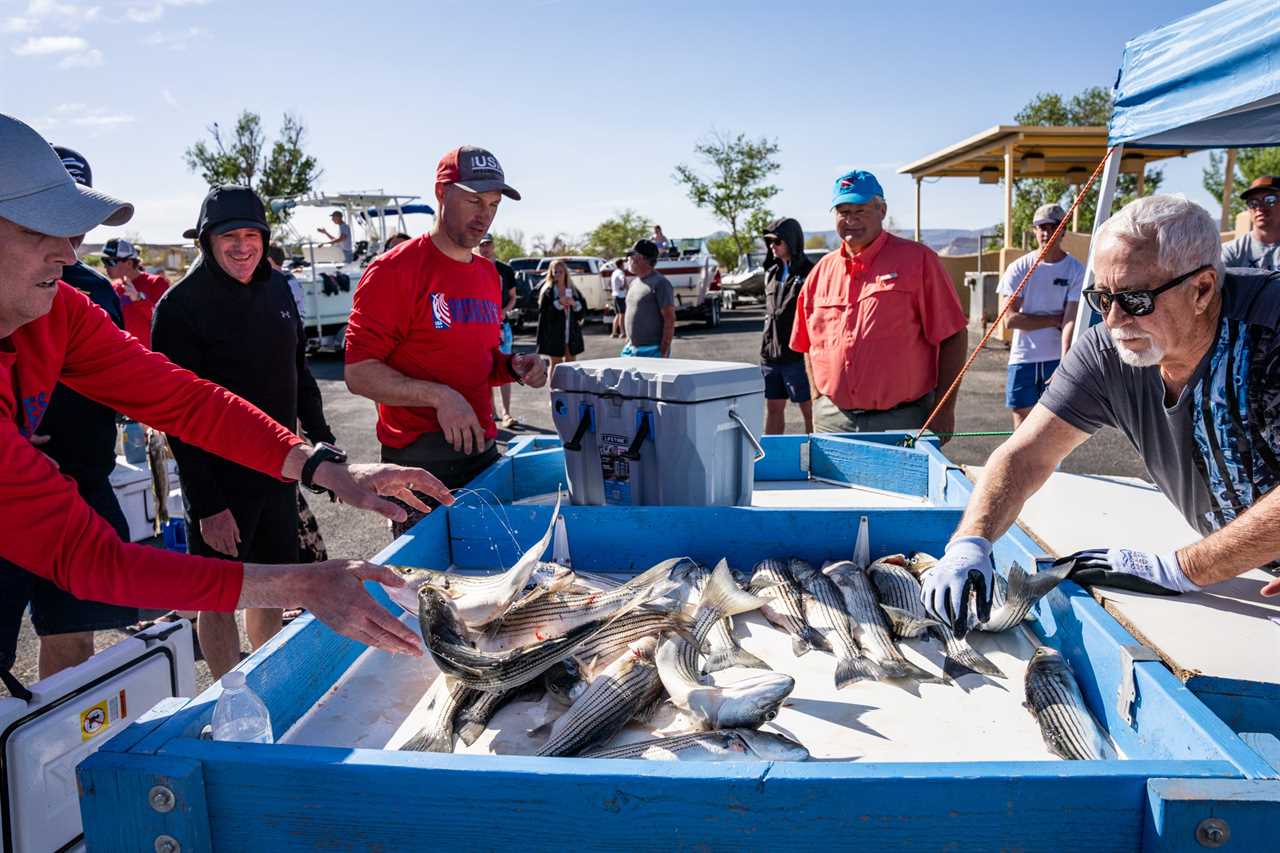
Mike Livingston (left) and Bahia Bros teammates deliver their striped bass haul to the weigh-in table at the end of the first day of competition at the Wahweap Marina near Page, Arizona. The team took first place in the tournament members will be on teams representing the U.S. at the 2023 world championship in Lake Powell. Evan Frost
The post PHOTOS: Spearfishers Shoot Thousands of Pounds of Carp from Lake Powell appeared first on Outdoor Life.
By: Evan Frost
Title: PHOTOS: Spearfishers Shoot Thousands of Pounds of Carp from Lake Powell
Sourced From: www.outdoorlife.com/fishing/spearfishing-lake-powell-tournament-photos/
Published Date: Mon, 09 May 2022 20:39:26 +0000
----------------------------------------------
Did you miss our previous article...
https://manstuffnews.com/weekend-warriors/kid-catches-and-releases-giant-gar-that-could-have-rivaled-the-texas-state-record
 Backyard GrillingWeekend WarriorsAdvice from DadBeard GroomingTV Shows for Guys4x4 Off-Road CarsMens FashionSports NewsAncient Archeology World NewsPrivacy PolicyTerms And Conditions
Backyard GrillingWeekend WarriorsAdvice from DadBeard GroomingTV Shows for Guys4x4 Off-Road CarsMens FashionSports NewsAncient Archeology World NewsPrivacy PolicyTerms And Conditions
